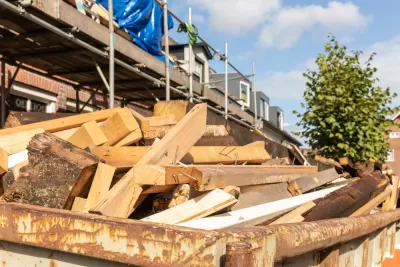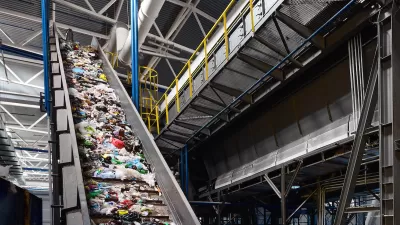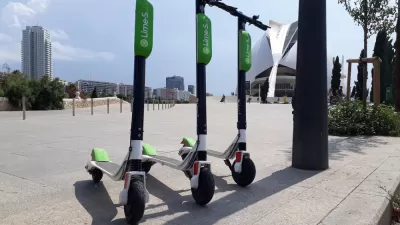A growing movement seeks to reduce waste in the construction industry and focus on the long-term impact of building materials.

Buildings may seem like a lasting investment, yet the construction industry creates roughly one-third of the world’s waste. To address this, researchers and architects are looking for ways to design buildings to be more sustainable, adaptable, and recyclable through a process known as ‘circular building.’ Nicole Gull McElroy describes the movement in Wired.
Circular building is “the practice of making buildings that can be more easily disassembled, moved, or repurposed” and built with reusable materials. “While circular construction and design for disassembly is often practiced on a smaller scale, many architects and designers are pushing the idea forward and testing the limits of what’s possible with larger projects.”
The article describes several examples of projects designed to expand on circular building and bring it into mainstream design practices, aided in some cases by public policy. Los Angeles requires that 65 percent of construction waste be recycled. “Portland, Oregon, was the first to enact deconstruction ordinances and waste removal strategies in 2016. Milwaukee followed in 2017.” And the Office of Historic Preservation in San Antonio, Texas created a Deconstruction and Circular Economy Program, which focuses on the link between preservation, deconstruction, and affordable housing. According to program manager Stephanie Phillips, the process is about “reversing the dependency on replacement products and the widespread disposal of valuable cultural assets while maintaining local cultural identity and a key source of generational wealth for our longtime residents: their homes.”
FULL STORY: Hey Man, Can I Use That Building When You’re Done With It?

Alabama: Trump Terminates Settlements for Black Communities Harmed By Raw Sewage
Trump deemed the landmark civil rights agreement “illegal DEI and environmental justice policy.”

Planetizen Federal Action Tracker
A weekly monitor of how Trump’s orders and actions are impacting planners and planning in America.

The 120 Year Old Tiny Home Villages That Sheltered San Francisco’s Earthquake Refugees
More than a century ago, San Francisco mobilized to house thousands of residents displaced by the 1906 earthquake. Could their strategy offer a model for the present?

San Francisco Opens Park on Former Great Highway
The Sunset Dunes park’s grand opening attracted both fans and detractors.

Oregon Legislature to Consider Transit Funding Laws
One proposal would increase the state’s payroll tax by .08% to fund transit agencies and expand service.

Housing Vouchers as a Key Piece of Houston’s Housing Strategy
The Houston Housing Authority supports 19,000 households through the housing voucher program.
Urban Design for Planners 1: Software Tools
This six-course series explores essential urban design concepts using open source software and equips planners with the tools they need to participate fully in the urban design process.
Planning for Universal Design
Learn the tools for implementing Universal Design in planning regulations.
Clanton & Associates, Inc.
Jessamine County Fiscal Court
Institute for Housing and Urban Development Studies (IHS)
City of Grandview
Harvard GSD Executive Education
Toledo-Lucas County Plan Commissions
Salt Lake City
NYU Wagner Graduate School of Public Service





























